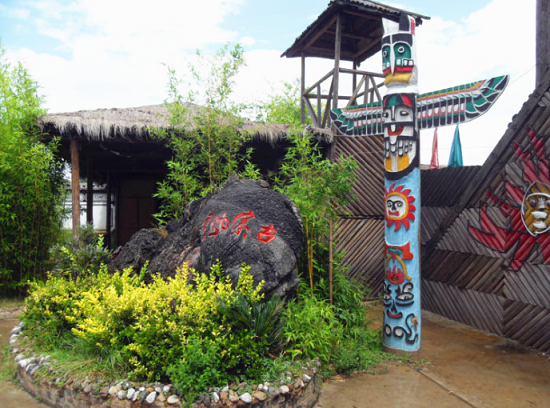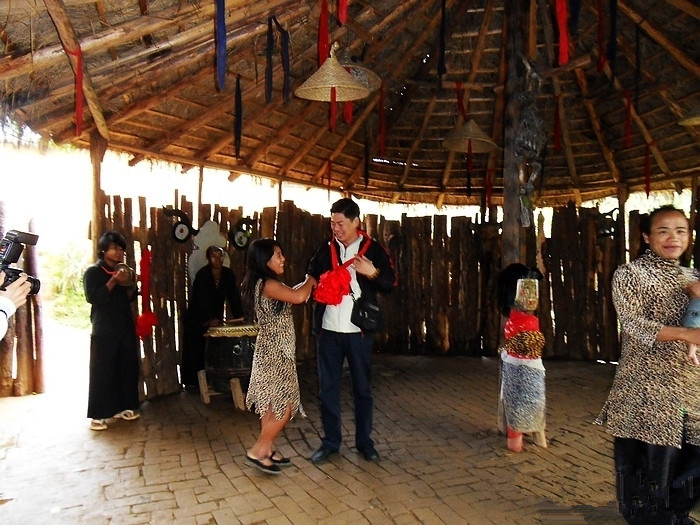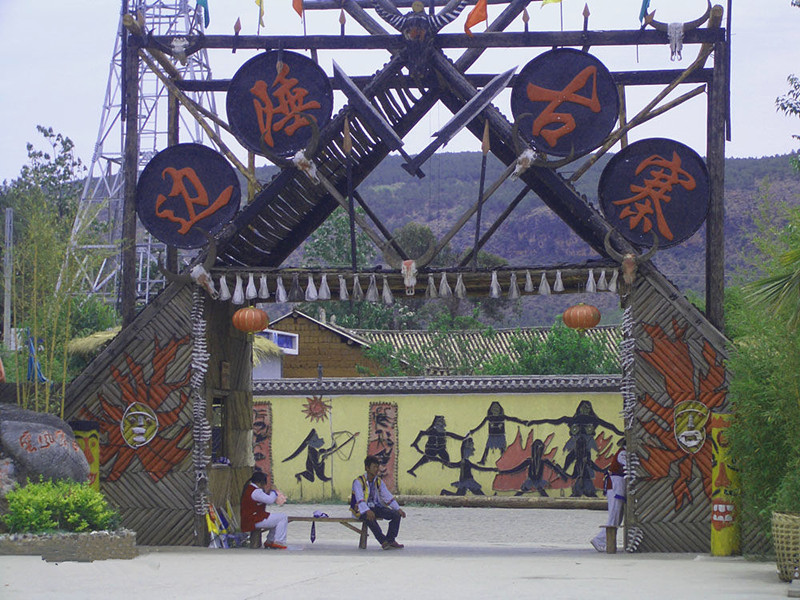Bianchui Ancient Village in Heqing County, Dali
Overview
Bianchui Ancient Village (边陲古寨, Biānchuí Gǔzhài) is located 12 kilometers south of Heqing City (鹤庆城, Hèqìng Chéng), 54 kilometers from Lijiang (丽江, Lìjiāng), and 132 kilometers from Dali (大理, Dàlǐ). Covering an area of approximately 50 acres, this unique residential style tourist area stands out along the Dali-Lijiang tourism route.
Unique Features
The village is characterized by its distinctive architecture and unusual scenery. While there are winding paths, they do not lead to secluded areas, and the landscape, though scenic, is not conventionally charming. The village is home to a group of border people who seem almost forgotten by the outside world. Historically, these border people lived along the China-Myanmar border without an identifiable ethnic group, leading a primitive lifestyle where they covered themselves with leaves, ate raw food, and lived in trees.
To address their living conditions, Yunnan’s relevant authorities constructed this mountain village—Bianchui Ancient Village—and invited some young border residents to collaboratively develop a new tourism project aimed at improving their livelihoods.
Important Information
- Chinese Name: 边陲古寨 (Biānchuí Gǔzhài)
- Location: 12 kilometers south of Heqing City (鹤庆城, Hèqìng Chéng)
- Area: Approximately 50 acres
- Type: Residential style tourist area
- Opening Hours: Daily from 08:00 to 20:00
Cultural Insights
The border people do not understand the local language and have no written characters. To show friendliness, visitors should say “亚哈亚哈” (Yàhā Yàhā), and to ask for photos, say “咔嚓咔嚓” (Kāchā Kāchā). The village features several rows of thatched houses resembling shacks found in melon fields. While the layout may not be intricate, it is orderly and clean.
Hanging from the roofs are the skulls of unknown animals, and in front of the houses are tools for hunting and defense against wild beasts. Bird nets made of twine are scattered on the ground and trees, indicating their use in trapping birds.
Daily Life of the Border People
Today, the border residents wear clothing—men typically wear black pants, while women dress in bikini-like attire, occasionally donning long shirts. They have dark skin and robust bodies, and both men and women go barefoot.
Attractions Within the Village
The scenic area is divided into five sections:
- Face Painting and Body Art Area (画脸闻身区, Huàliǎn Wénshēn Qū): Demonstrates a security check for visitors.
- Hunting Area (捕猎区, Bǔliè Qū): Showcases skills for capturing prey in harsh environments; actual hunting is rare.
- Welcoming Area (迎宾区, Yíngbīn Qū): Border people welcome visitors with songs and dances.
- Extraordinary Skills Area (奇功异能区, Qígōng Yìnén Qū): Displays bizarre skills like licking metal plates, eating charcoal, walking barefoot on glass, catching small pigs, eating leaves, chewing tree bark, and drinking raw blood.
- Marriage Customs Area (婚俗区, Hūnsú Qū): Illustrates unique marriage customs of the border people, though this section lacks live performances.
Visitor Experience
The peculiar ways of life of these extraordinary border residents will provide visitors with unexpected insights. During the tour, residents might appear suddenly, shout unexpectedly, or leap from trees, all designed to surprise and astonish visitors.
Practical Information
- Ticket Price: CNY 100.00
- Transportation:
- Self-Driving: Access via the Xijing Line 4 – G214 highway.
How to Get There
To reach Bianchui Ancient Village:
- By Car: Drive from Dali City (大理市, Dàlǐ Shì) along G214, following signs to Heqing County.
- By Public Transport: Take a bus from Dali to Heqing and then a local taxi or minibus to the village.
Travel Tips
- Best Time to Visit: Spring (March to May) and autumn (September to November) offer mild weather and beautiful scenery.
- What to Bring: Bring small change, cigarettes, candies, or snacks to share with locals, which can enhance your experience.
- Cultural Respect: Engage respectfully with the border people, and take care when taking photos.
Bianchui Ancient Village offers a fascinating glimpse into a unique culture, making it an unforgettable destination for adventurous travelers seeking to explore the lesser-known aspects of Yunnan.


















